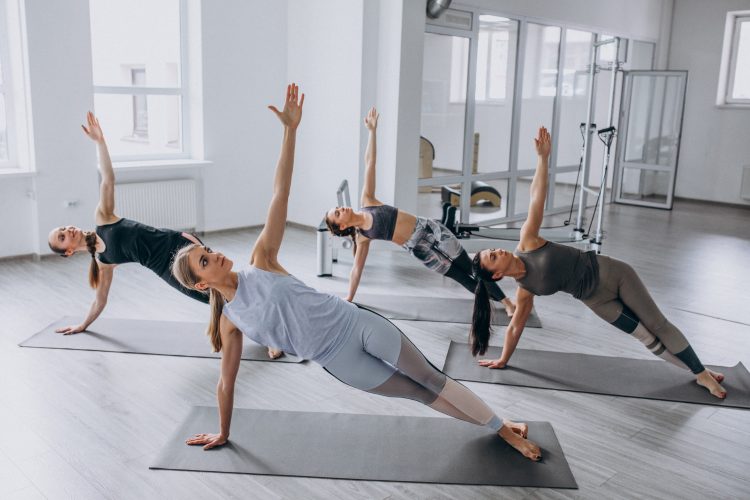Have you ever wondered what it takes to be a Pilates instructor? Whether you’re looking for a career change or simply wish to deepen your practice, becoming a Pilates instructor can be both fulfilling and exciting. This detailed guide will navigate you through the ins and outs of becoming a certified Pilates instructor, ensuring you’re fully prepared to teach with confidence and skill.
Elevate Your Fitness Career with ASFA!
Looking to unlock your potential and take your fitness career to the next level? ASFA offers specialized, budget-friendly certifications designed for professionals and fitness enthusiasts alike. Join thousands worldwide who trust us to help them achieve new heights.
Discover innovative certifications, comprehensive manuals, exclusive partner discounts, and more at ASFA Fitness – The Ultimate Online Fitness Resource.
Pay Only If You Pass!
Don’t wait. Your next career step is just a click away. Start your journey today!
What is Pilates?
Pilates is a form of low-impact exercise that aims to strengthen muscles while improving postural alignment and flexibility. Pilates moves tend to target the core, although the exercises work other areas of your body as well. You can perform Pilates with or without equipment, but no matter what, expect the moves to involve slow, precise movements and breath control. Pilates is a full-body exercise method that will help you do everything better. It’s loved by everyone from professional athletes to dancers to home exercisers.
Why Become a Pilates Instructor?
Becoming a Pilates instructor carries a multitude of benefits. Not only do you get to share something you love with others, but you also get to witness the transformation in your students as they get stronger and more coordinated.
- Passion for Fitness: You’re turning your passion into a profession. Isn’t that a dream come true?
- Flexibility: Say goodbye to the 9-to-5 grind. Pilates instructors often have flexible schedules.
- Continuous Learning: The field of Pilates is always evolving, offering endless learning opportunities.
- Health and Fitness: You’re working in a field that promotes health and wellness, not just for your clients but for yourself as well.
Path to Becoming a Pilates Instructor
Education and Certification
- Choose a Training Program: Pick a Pilates certification program that is reputable. Consider programs accredited by the Pilates Method Alliance (PMA) or other recognized bodies.
- Complete Required Hours: Certification typically requires a mix of instruction and practice hours. This can range from 450 to 900 hours of training, including anatomy, teaching techniques, and supervised teaching.
- Pass the Certification Exam: After completing your training, you’ll need to pass an exam to become certified. This test usually covers both theory and practical skills.
- Continue Education: Pilates is a dynamic field. Staying updated with the latest training and techniques is crucial.
Skills Needed
- Strong Communication: You’ll need to clearly explain exercises and correct form.
- Attention to Detail: Precision is key in Pilates.
- Empathy and Patience: Every client is different, and adapting to their needs is vital.
- Physical Fitness: Instructors need to demonstrate Pilates movements frequently.
Setting Up Your Pilates Teaching Practice
Once you’re certified, the next step is to set up your teaching practice. Here’s what you need to consider:
- Location: Will you teach at a gym, open your studio, or offer classes online?
- Equipment: Depending on your teaching location, you may need to invest in Pilates equipment like reformers and mats.
- Marketing Your Services: Create a marketing plan to attract clients. Utilize social media, local advertising, and word-of-mouth referrals.
Marketing Tips for Pilates Instructors
Online Presence
- Build a Professional Website: Showcase your services, class schedules, and professional certifications.
- Social Media: Use platforms like Instagram or Facebook to share class updates, Pilates tips, and client testimonials.
Community Engagement
- Offer Workshops: Host workshops to attract newcomers.
- Participate in Community Events: Increase visibility by participating in health fairs and local events.
Common Challenges and How to Overcome Them
Staying Motivated
- Continuous Learning: Keep your routine fresh by learning new Pilates techniques and exercises.
- Peer Networking: Connect with other Pilates instructors for support and inspiration.
Client Retention
- Engaging Classes: Keep your classes dynamic and challenging.
- Client Feedback: Regularly ask for feedback to improve your sessions and cater to client needs.
FAQs
What is the average salary for a Pilates instructor?
The salary can vary widely depending on location, experience, and whether you work at a studio or independently. Generally, Pilates instructors can expect to earn between $30 to $50 per hour.
Do I need to be in top physical shape to teach Pilates?
While being in good physical condition is helpful, Pilates instructors come in all shapes and sizes. Skill and proper technique are more important than physical appearance.
Can I teach Pilates if I have a full-time job?
Yes! Many instructors teach Pilates as a part-time job. Classes are often scheduled in the early mornings, evenings, or weekends.





